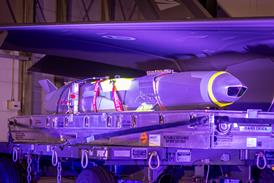Boeing says operators will earn more revenue from twinjet because lower overheads will keep them in the air for longer
Boeing has revealed new details about its built-in reduced-maintenance plans for the 787, which it says should alone result in around $8 million of additional operating revenues per aircraft over the first eight years of service.
Boeing 787 deputy chief mechanic Justin Hale says that, over the first eight-year period, the reduced maintenance burden will free the aircraft for around 131 more flights than the average Airbus A330 over the same period: "It would have 14 fewer line checks, two fewer base [C] checks, and one less structural [4C] check."
Boeing says the advanced structure, which will be around 52% by weight composites, will not require its first heavy maintenance D check until its twelfth year in service, compared with eight years for the 777, and six for the 767 and A330. First base maintenance check will occur at 36 months, or twice the interval for the 767/A330. The same interval for the 777 is 24 months. Line maintenance check intervals are similarly extended with the 787 at a planned 1,000h versus 600h for the 777, 700h for the A330 and 300h for the 767.
Part of the cost savings will also come from the adoption of a simpler overall system design philosophy driven by the more-electric concept, says Hale.
"For the first time on any Boeing design we're designing in for aircraft availability over the life of the aircraft," he adds. "We are also guaranteeing a 30,000h mean time between failures," says Hale, citing systems such as the auxiliary power unit, which he says will have five times better starting reliability than existing units.
Source: Flight International























